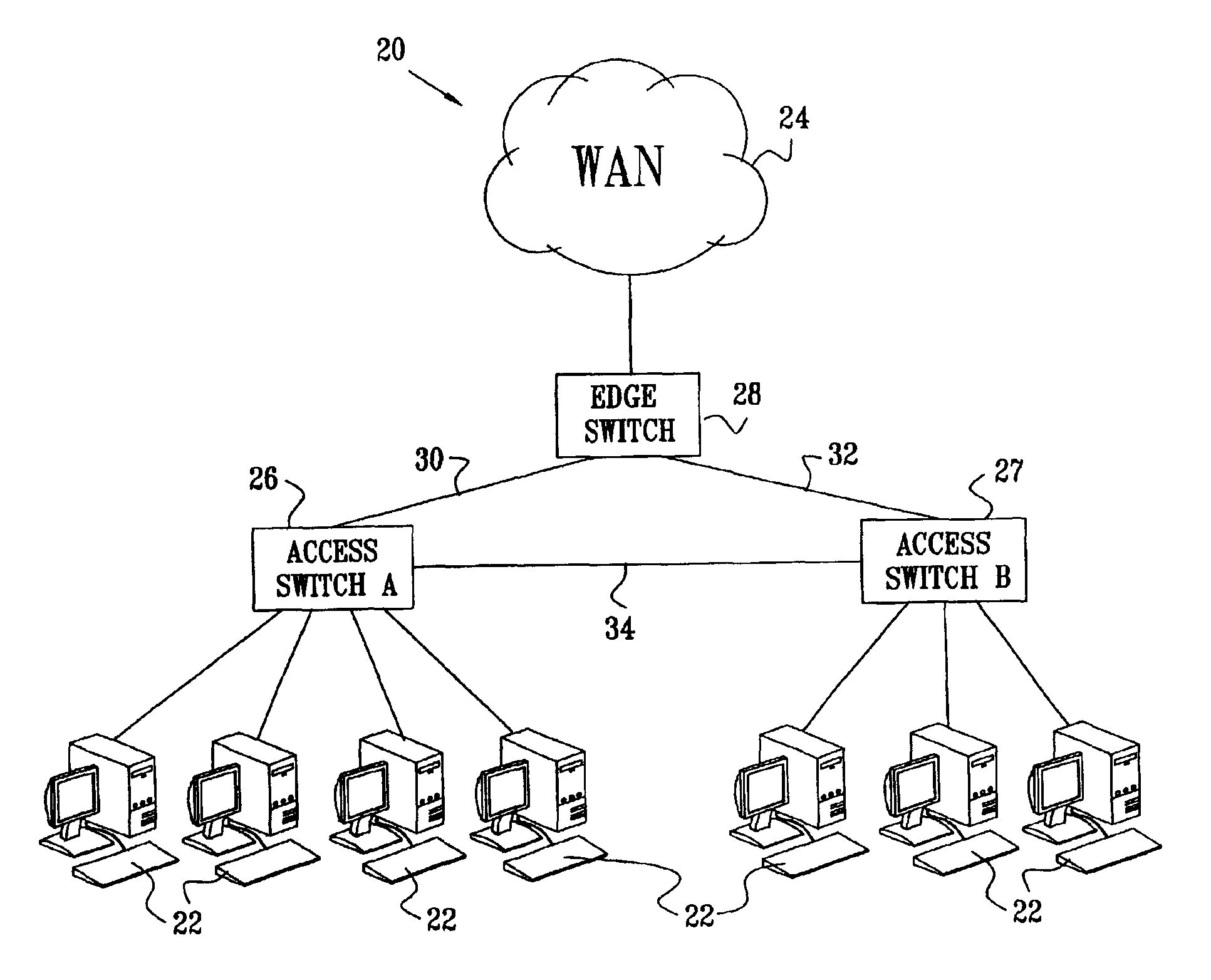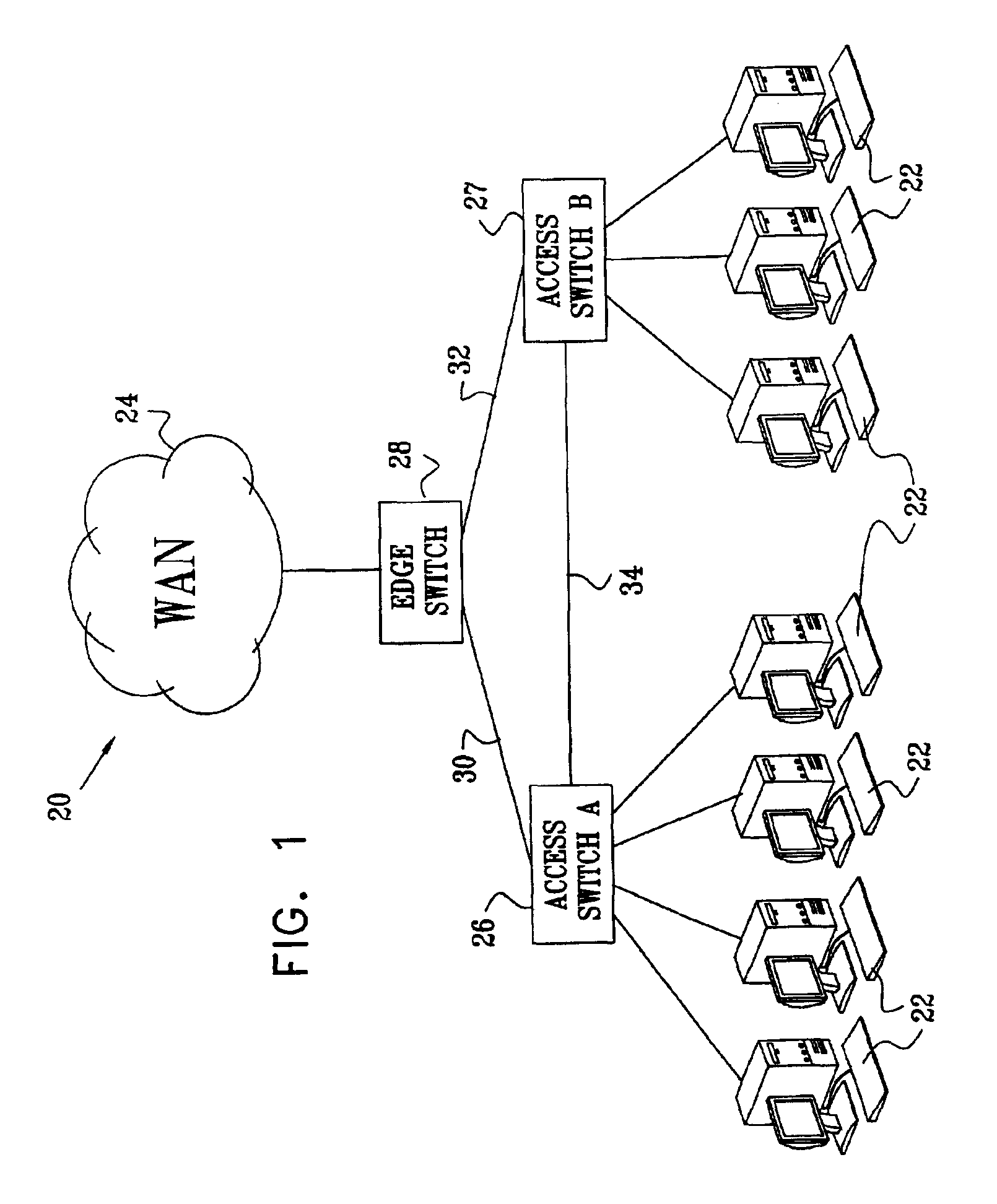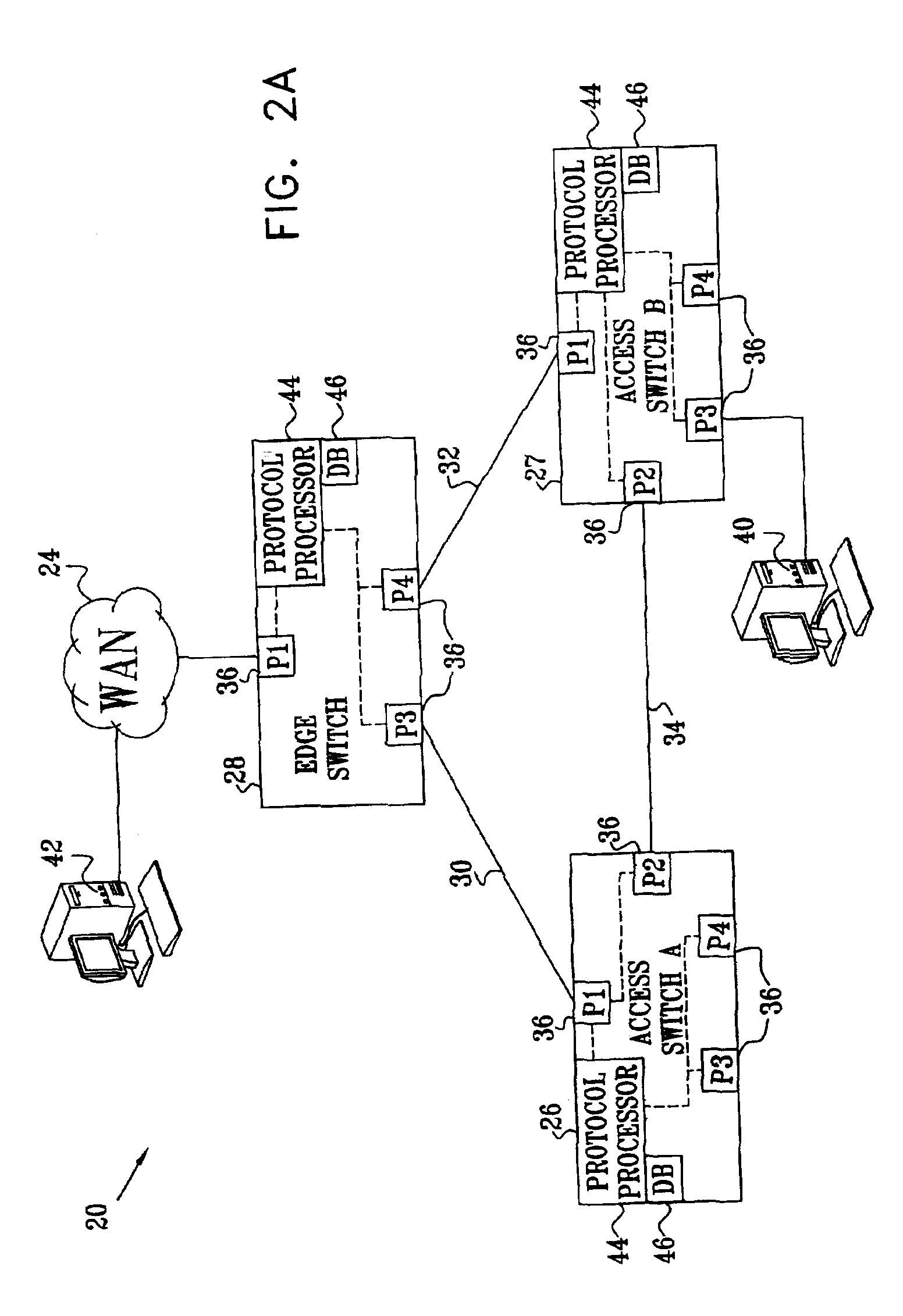Fast failure protection using redundant network edge ports
a network edge port and failure protection technology, applied in the field of communication networks, can solve the problems of network congestion, take a long time to rebuild the filtering database, and disrupt the proper functioning of the learning process, and achieve the effect of rapid reconfiguration in respons
- Summary
- Abstract
- Description
- Claims
- Application Information
AI Technical Summary
Benefits of technology
Problems solved by technology
Method used
Image
Examples
Embodiment Construction
[0048]FIG. 1 is a block diagram that schematically illustrates a computer network 20, which is configured with redundant links for fast protection of user access in case of network failure, in accordance with a preferred embodiment of the present invention. Network 20 serves multiple users 22, who are connected via access switches 26 and 27 (marked access switches A and B) to a WAN 24. Each of the access switches is connected by a respective access link 30 or 32 to an edge switch 28, which is in turn connected to the core WAN. A lateral link 34 between access switches 26 and 27 is used to provide protection in case of a failure in one of access links 30 or 32 or in the corresponding ports of the access switches or edge switch. Protection could similarly be afforded by providing a single access switch with dual edge ports to edge switch 28.
[0049]Links 30, 32 and 34 create a loop in network 20. Ordinarily, running STP on the network would lead to one of these links being blocked in or...
PUM
 Login to View More
Login to View More Abstract
Description
Claims
Application Information
 Login to View More
Login to View More - R&D
- Intellectual Property
- Life Sciences
- Materials
- Tech Scout
- Unparalleled Data Quality
- Higher Quality Content
- 60% Fewer Hallucinations
Browse by: Latest US Patents, China's latest patents, Technical Efficacy Thesaurus, Application Domain, Technology Topic, Popular Technical Reports.
© 2025 PatSnap. All rights reserved.Legal|Privacy policy|Modern Slavery Act Transparency Statement|Sitemap|About US| Contact US: help@patsnap.com



